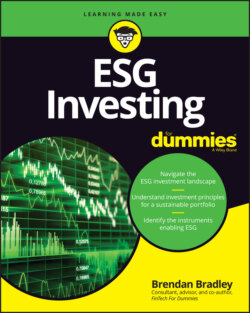Читать книгу ESG Investing For Dummies - Brendan Bradley - Страница 41
Applying weights to materiality measures
ОглавлениеAfter you’ve determined that material issues should either impact a company’s business significantly or be important to their stakeholders, or both, it’s important to determine the relative weight that needs to be applied to those issues, which are driven by the respective impact across the value chain. Most service providers for ESG scores refrain from giving transparent, quantitative guidance for the mathematical calculation of materiality. While provision is suggested for the use of benchmarks to calculate materiality, they don’t recommend specific benchmarks or formulas.
For traditional accounting materiality, single-rule methods and variable-size methods have been used to determine weighting. Single-rule methods can include the effect on a given percentage of pretax income, total assets equity, or total revenue. Sliding-scale or variable-size methods apply given percentages to different levels of gross profit. In general, companies use blended methods to combine some or all methods by using appropriate weighting for each element.
Within ESG there are currently no industry norms or globally recognized practices for evaluating and measuring materiality weighting. Moreover, each ESG data provider has developed a method to aggregate and weigh materiality for its summary scores, but these are proprietary judgments made by each provider. Indeed, analyzing the different methodologies used by leading ESG providers highlights the challenge that investors face. There are distinct differences in the way they collect and analyze ESG data, resulting in low correlations between their aggregation metrics; this increases the difficulty in extracting weights given to material issues.
Furthermore, not all weightings have the same importance to every industry (see Chapter 14 for more information). Some providers use levels of data disclosure as a proxy for the relative weight of materiality issues for each industry. This data highlights which sectors contribute most, and their proportion of the contribution to the total is used as a proxy for the level of materiality for that sector. For example, greater disclosure on carbon emissions data suggests that they are more material to companies in that sector. In addition, if given companies in a sector aren’t reporting relevant metrics, they may be arbitrarily assigned a score of zero to encourage disclosure and transparency.
Size matters! Given that larger market capitalization companies have more social media hits than smaller companies, some providers have applied a greater weighting on a small company’s material issues as they are likely to have a greater adverse effect. Likewise, every business is impacted by global macro trends and events (such as the coronavirus pandemic) that shape the world and businesses within it. It’s important to monitor those trends to assess their impact on a company’s material issues.
